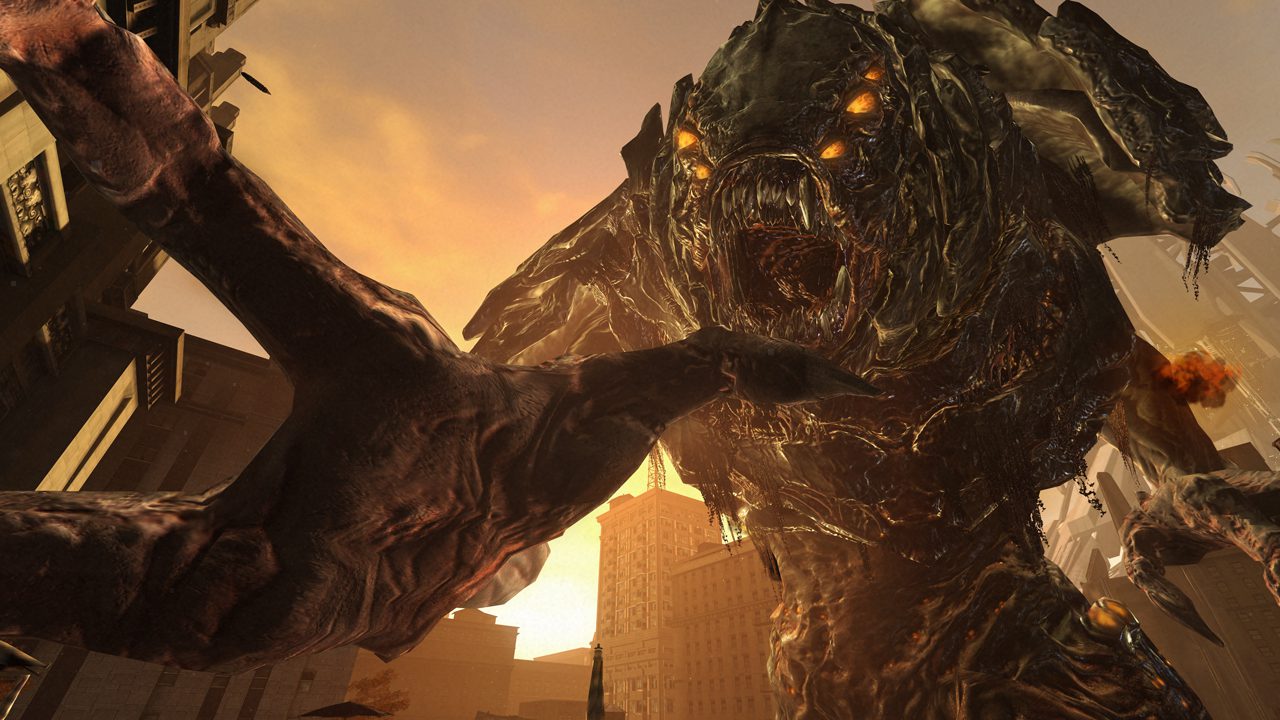I stopped by the store today to pick up a copy of the Resistance 3 demo for the wonderfully low price of 18 bucks. They even threw in a copy of Battle: Los Angeles, which was a nice perk. After finishing my third run through the demo, I came to a realization. In the battle for alien themed, console specific series, Resistance is far and away better than the often trumped up Halo, and as a public service, I’ve gathered up a few of the reasons why.
Heroes make games: Game protagonists used to be built on image. Mario wasn’t a hero to us because of his character traits or his personality; it was because he was a mascot, an icon. Yet even he grew over the years. Halo’s protagonist, Master Chief, is simply drawn to be a mascot, a face for a franchise. His actions are certainly heroic, but he never moves or evolves. He’s a Teflon hero. Nothing sticks to him, and nothing ever changes. He remains the perfect hero throughout, with no real growth. The men and women we step into in Resistance are the exact opposite of Master Chief. Nathan Hale was a broken man, a simple soldier thrust into a terrible situation, simply trying to survive. James Grayson is an angry, vengeful bastard. Joseph Capelli is a failed soldier, but devoted father. These people have flaws, ones that echo with all of us. We can relate to them because we understand them. The choices they face and the actions they take are done in spite of their flaws, and that makes their bravery and selflessness far more real and compelling than an invincible hero literally created to show no fear. Games have grown up, and we need characters that reflect the complexity of life and can show us how to be heroes in our own lives, and Resistance has always provided just that.
Stories do matter: Try as I might, I can’t find anyone that can accurately lay out the story of the Halo universe without them citing the book spin-offs or the Wikipedia entry. There is a story, certainly, but it is so tenuous and mashed together that connecting events make little to no sense. By Bungie’s admission, they design great levels for the game play and then write the story to fit the level design. That leads to the story being second rate, and becoming essentially meaningless. You can beat any of the Halo games without listening to a single snippet of dialogue or reading a line of the subtitles and have the same experience. What sets Resistance apart, not only from the alien-invasion genre it rests in, but most games in general, is its focus on the story and characters that drive it. Every action has a purpose, a reason and a reaction from the people involved. The world is living around them, and nothing is done in a vacuum. The motives of Hale, Capelli and Grayson are rooted in their story arcs. Resistance Retribution told an incredible tale of family loyalty and self-destruction. The first Resistance made clear the horrors of war and the hesitation of every soldier. In September, we follow the trail of a man forced to leave his family, a father who carries around his newborn baby’s mitten to give him a tangible tie to his home. These are incredibly powerful stories. Even without having a child, seeing Capelli clutching the mitten tugged at my heart. Stories like those in Resistance are where games transcend from entertainment into art.
Go big or go home: One thing Resistance can never be accused of is going small. With each game the enemies became larger, the sets more elaborate and the payoffs more massive. Fighting a 10-story Chimera over the dilapidated rooftops of flooded Chicago will always stick with me. In the new demo, your boat floats past the carcass of a Kraken, an incredible beast whose corpse became home to numerous creatures. These immense aliens add variety and awe to a game, something that first person shooters need due to the repetitious nature of the genre. Battles on such a scale often break up the monotony of moving from room to room, corridor to corridor and shooting whatever is thrown at you. Even during Master Chief’s battle inside the Flood nest, the formula was the same. The scale of the battles never changed, simply the décor. It is hard to forget the last leg of the original Halo, where hours are wasted walking through a bland, silver corridor, facing a wave of bad guys, then turning left and repeating the process over and over. Halo never really got out of that habit. At this point in gaming, even mobile games are offering more variety in enemies and levels than the Halo franchise.
Enemy Mine: While big monsters certainly help add variety to a game, you can’t create a game based solely on that idea. Well, you can if you’re Monster Hunter, but typically it’s bad form. The baddies you conquer from level to level need to be just as varied and exciting as the large battles you face at the end of major events. The Chimera offer countless numbers of variations, forcing you to adapt combat strategies and weapon choices constantly. Each one is more terrifying than the last, featuring more disturbing combinations of teeth and eyes. They range from the technologically advanced to the mindless brute, but all are deadly. Sadly, the Covenant hasn’t branched out much in its recruitment. Facing wave after wave of vertically challenged aliens who sound like they are attempting a rendition from my Alvin & the Chipmunks Christmas album doesn’t exactly inspire fear. The influx of Brutes and Jackyls offers limited variety. After you’ve seen them, you know what you’re getting. Having fought them over the course of four games now has helped them lose any impact they once had. I don’t want the enemies in my sights to be the comic relief.
- This is what an enemy looks like
My loyalty lies with Earth: I realize that this is absolutely a personal preference, but I just find Earth to be a much cooler setting than random space stations and moon bases. If done well, ala Mass Effect, space can be an incredible setting, but too often game designers fall into the conventions of 1950’s sci-fi movies. Without the right characters and motivations, space is just boring. However, Earth is still rich with possibilities. The alternate history of Resistance allows for fantastical departures from reality while still giving us solid footing to grab onto and relate to. Fighting in our own backyard always adds a gravitas to a game that quickly assembled fantasy settings can never touch.
When the original Halo premiered, it set the world on fire because of the incredible execution of the multi-player, and while it isn’t beyond reason to give Bungie credit for making the multi-player market what it is today on consoles, it just isn’t enough anymore. Every game has multi-player, but not every game has a rich and verdant world from which compelling characters speak to us and pull us in. The time of tacking a story onto a game as an afterthought is over. Halo went into its twilight period with Reach, and it went out with a bang. Now it’s time for something new, something rich and wonderful to step up and show us where the first person genre can go. Right now Resistance is the best representation of how a franchise should develop and progress. Catch up now, September 6th is coming up fast.





